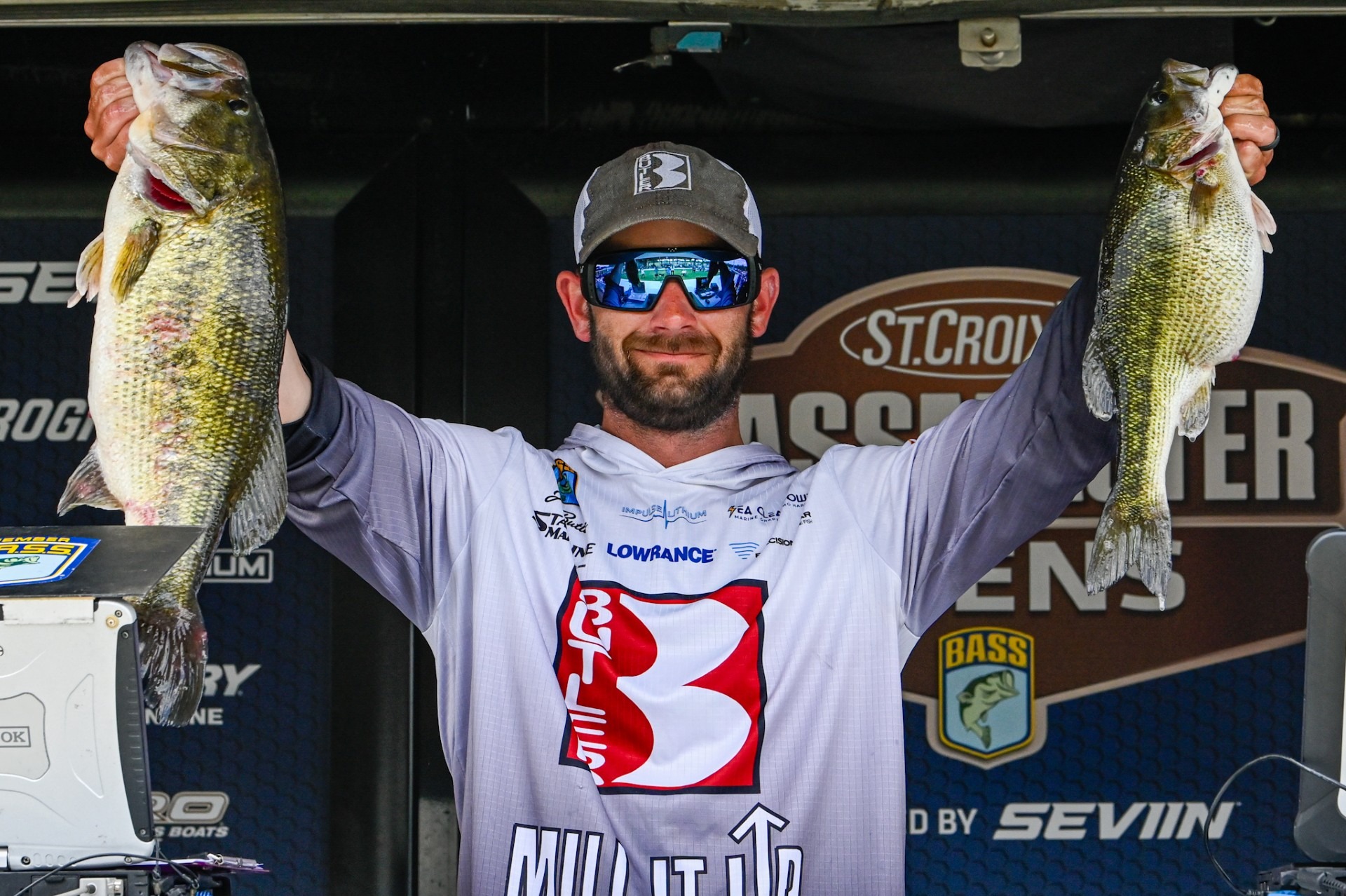
When Josh Butler described his Day 1 performance, which led to a 19-pound, 7-ounce limit that lead the opening round of the St. Croix Bassmaster Open at Logan Martin Lake presented by SEVIIN, he spoke of particular moments.
One of them was the day’s biggest bass — a 7-13 that bit within his first 30 minutes of fishing. That fish was the product of a brief period of opportunity known as the shad spawn.
Many anglers reported having their own moments with this pattern.
After that early flurry, Butler settled into a day-long grind of looking for occasional moments of bed fish vulnerability. As he explained, the moment Alabama Power started stepping up the current running through this Coosa River reservoir, his day grew increasingly difficult.
In most scenarios, increased current is a welcome change, as it motivates baitfish and bass do the things that make the latter easier to catch. However, Butler said the moving water made it difficult to target fish that were bedding in the current.
Making the right presentation at the right moment was the key here.
Second round outlook
Butler said he would attempt to replicate his Day-1 game plan, but he said he’d do so with an open mind. Much can change from day to day and he’s convinced that flexibility and alertness will be his biggest allies.
“I’m just going to take it one fish at a time and stay in the moment,” Butler said. “Some of these bites are really subtle, so you have to be paying attention every single cast.
“I’m trying not to think, ‘I got a great start.’ I’m going to need all the weight I can. Going into it, I thought I might be able to catch 11-12 pounds, but having this kind of start really puts (the pressure on me). I have to keep it up and catch them on Day 2.”
Shad spawn extension
With threadfin shad mostly spawning overnight, anglers look for fast and furious action in the first hour after daybreak. Once the sunlight reaches mid-morning intensity, the baitfish disperse and the bass go about their daily routines.
Day 2 saw the sun break through cloud cover around 7:30., but for the next hour, sun and clouds traded dominance. This extended dimness may have stretched the shad spawn a little farther, so it will be interesting to see how many anglers capitalized on that morning bite.
Afternoon delight
While shad spawns typically occur in that early morning period, second-place pro Emil Wagner mention fishing what he believed was a late-day shad spawn. He didn’t visually observe the surface splashing characteristic of morning shad spawns, but he targeted an area where the baitfish were active in the low-light hours and found bass clustering, as they would when preying on distracted shad.

Moment of emergence
The larger trees surrounding the tournament takeoff at Lincoln Landing bristle with cicadas in various stages of development. Emerging from subterranean burrows every 13-17 years, these large insects with brilliant red eyes first appear in nymph form, but cling to their host tree until they morph into winged adults.
By comparison, mayflies hatch underwater, then morph into terrestrial insects. During their two-stage development, the flies become forage targets for bluegill, and therefore, attract bass.
Cicadas are solely terrestrial insects, but their awkward early flight phase occasionally finds them ditching in nearby waters. Large enough to interest opportunistic bass, cicadas that fall to the water won’t last long when hungry predators spot them.
Unlike the mayfly hatch, which yields a solid and dependable bass fishing pattern, there’s really not a “cicada pattern.” However, one or two surface pops might clue an angler into a brief topwater rally — or at least, point them toward an active area.
A moment of enlightenment is a moment of opportunity.





